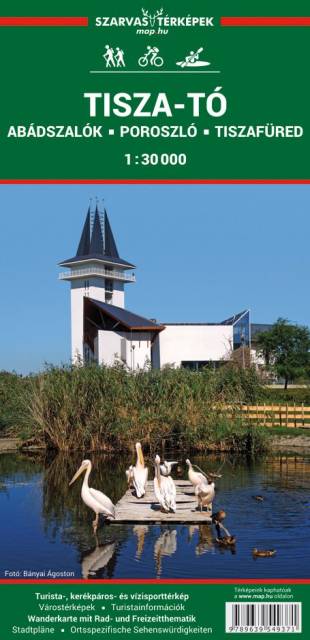CHARAKTERYSTYKA TRASY

Komentarze
NA TEJ TRASIE PRZYDA CI SIĘ MAPA Z NASZEJ APLIKACJI

Lake Tisza, also known as Kisköre Reservoir, is the largest artificial lake in Hungary. It is located at the southeastern edge of Heves county. As part of the ongoing Tisza River flood control project, the Tisza Dam was built in 1973. The lake is 27 km in length, with an average depth of 1.3 m and a maximum depth of 17 m; it contains 43 km² of small islands. Following the reservoir's completion, Hungarians began to flock to the site for holidays, since it compared favorably with the crowded and expensive Lake Balaton, the traditional holiday site. As a result, tourist infrastructure has been developed on the reservoir—renamed Lake Tisza—and the government has designated it an official tourism destination. The lake (or reservoir) has a new local ecology with a diversity of birds, plants, and animals. (wikipedia.org)
Update: 2017


The Bükk Mountains are a section of the North Hungarian Mountains of the Inner Western Carpathians. Much of the area is included in the Bükk National Park. Although Kékes, the highest point in Hungary, is not here but in the nearby Mátra Mountains, the average height of the Bükk Mountains–with more than 20 peaks higher than 900 m–exceeds that of Mátra. The highest point of Bükk is Istállós-kő (959 m), third highest in Hungary after Kékes and Galyatető. There are 1115 known caves in the mountain range, including Bányász-barlang (Miner cave, 274 m) and István-lápa (254 m), the deepest caves in Hungary, the archaeologically important Szeleta cave, the Cave Bath (a main tourist attraction of Miskolc-Tapolca), the Anna Cave, and the István Cave. 52 of the caves are protected because of their fauna and microclimate. The mountain range is also famous for its skiing facilities located around Bánkút. There are a number of maintained ski slopes equipped with several J-bar lifts. The long traditions of skiing – on the racing and recreational levels – in Bükk are fostered by local enthusiasts constituting the "Bánkút Ski Club" also in charge of operating and developing one of the largest alpine ski centres in Hungary.
Update: 2017

The Laborec Highlands is a mountain range in northeastern Slovakia, part of the Lower Beskids of the Outer Eastern Carpathians. The highest point is Vysoký Grúň, at 905 metres. The region is drained by the Laborec River and, in its western portion, by the Ondava. Notables town and villages in the hill country include Medzilaborce (site of the Andy Warhol Museum of Modern Art), Vyšná Jablonka, Bodružal, and Vyšný Komárnik. The highlands are also the location of the strategically significant Dukla Pass, the lowest mountain pass in the main ranges of the Carpathians, and the site of the Battle of the Dukla Pass of September and October 1944.
Published: 2016/2017



